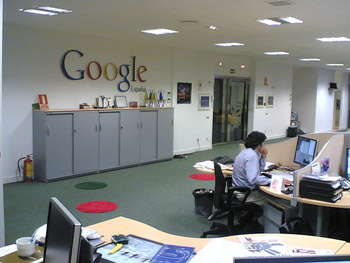Google will develop MySQL

MySQL AB has presented a development plan for its eponymous DBMS until 2009. According to the developers, in 2009 we can expect the appearance of the 7th version of this DBMS. In addition, the company reports that the Internet giant Google has taken up assistance in the development of MySQL and in version 7 you can see a lot of code created by programmers from Mountain View.
Today, MySQL is the most common DBMS on the Internet. For users who do not require technical support MySQL free. In the past one and a half to two years, MySQL AB has been actively promoting its development in the corporate sectors, where traditionally the ball was run by Oracle, IBM and Microsoft.
In the first half of 2007, Google and MySQL signed a license agreement Contributor License Agreement, under which MySQL will include in the DBMS code produced by other companies, said MySQL Vice President David Axmark.
')
Officially, Google does not provide information about where and how MySQL is used in the company, but according to unofficial data, Google is considered one of the world's largest users of this product and the company’s infrastructure runs up to several thousand MySQL copies.
Today, Google is actively engaged in MySQL software tuning, applying a modified version to its internal needs, such as database replication, monitoring information, data retrieval, etc. By agreement Google-MySQL, the first will publish all these developments or most of them in the upcoming MySQL 6 release, which is scheduled for late 2008.
According to David Axmark, Google will also get some benefits from publishing these developments. First, official bug fixes will be issued for them, and second, these developments will be developed by a wide range of DBMS users.
Another significant moment in MySQL 6 is the new Falcon data storage engine, which will become standard in future versions. Falcon should replace InnoDB, the rights to which Oracle received.
Falcon will support fast recovery after crashes, rollback segments, and full-text indexing. Performance is also claimed to be no lower than the InnoDB mechanism.
As Kai Arno, vice president of MySQL for interaction with the developer community, noted, the upcoming year Google and MySQL will be needed to analyze the codes, make sure that they comply with the overall system development program, and also include them in the distribution so that seamless monolithic system. “This work has tremendous potential, but there is still a lot to do,” says Arno.
In addition, it is known that Google is an adherent of the open source Linux OS, so all Google development for MySQL is in fact Linux-oriented. MySQL also comes out for 15 operating systems, so the codes must also be ported.
Axmark also said that today the list of new features for MySQL 6.0 has already been approved, so all Google development will appear in version 6.1, which will appear at the very beginning of 2009.
As for MySQL 7, Google’s code will also be present here, but this version will be almost entirely focused on corporate use and the features arising from this, as well as on security. In particular, the concepts of user groups and user roles will appear in MySQL 7 (approximately along the lines of Oracle DBMS). At the kernel level, the DBMS will be able to encrypt data.
In the near future, MySQL AB intends to release production version 5.1, where the data storage and indexing mechanism will be somewhat revised, which will increase the database performance.
A source
Source: https://habr.com/ru/post/15396/
All Articles